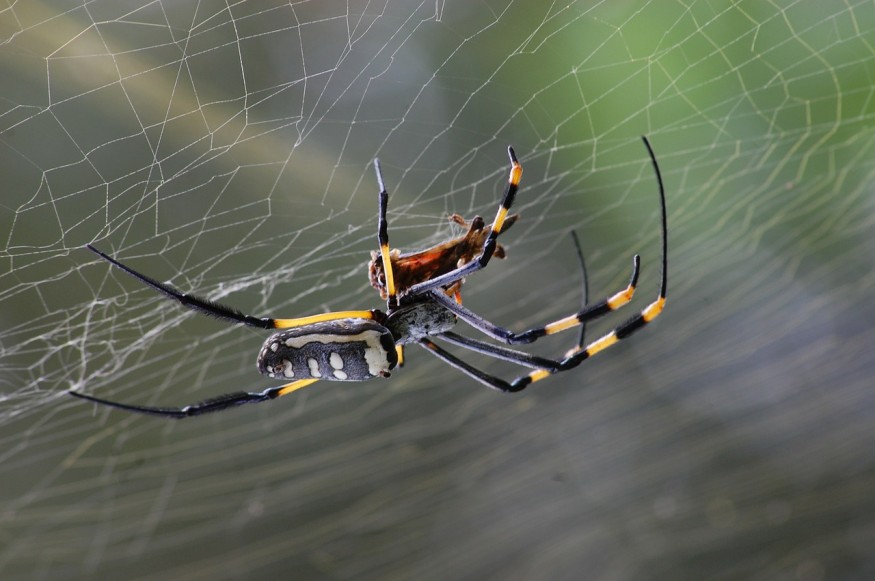
Arachnophobia or the fear of spiders is the most common phobias in the United States, according to the website The Recovery Village. Too bad, especially now because scientists at the University of Georgia announced on March 3 that the palm-sized Joro spider that arrived in the US in 2013 will spread on the East Coast soon.
As its name implies, the huge invasive spider could grow up to 3 inches (7.6 centimeters) and is the size of an adult's palm. Its hatchlings disperse through web parachutes and fly as far as 100 miles (161 kilometers), threatening other species in the Eastern Seaboard.
Palm-Sized Spider Could Survive the Cold and Potentially Spread All Over East Coast, Study Suggests
Joro Spider Hitchhiked to Arrive in the US
The palm-sized Joro spiders were commonly found in east Asia, particularly in China, Taiwan, Japan, and Korea. Scientific American reported that these species were part of the orb weavers group because of their symmetrical, circular webs. Its name came from the Japanese spirit called Jorōgumo, which means to disguise itself as a beautiful woman to lure men.
True enough, this spider's large, round, and jet-black body cut across with yellow stripes make it look stunning and threatening at the same time. Despite its fearsome reputation in Japanese folklore, the spider is rarely strong enough to injure people, and its venom does not affect humans, dogs, and cats unless they are allergic.
Joro ‘parachute’ spiders expected to spread across the East Coast, scientists sayhttps://t.co/1Dz9YaXfxz pic.twitter.com/iFRqwNnaQ7
— The Washington Times (@WashTimes) March 8, 2022
The Joro spider arrived in the US way back in 2013 when it hitchhiked its way to the northeast of Atlanta, Georgia, in a shipping container. Since then, its population expanded steadily across Georgia, which started the culmination of an astonishing population boom that saw millions of these spiders spreading in powerlines, mailboxes, and vegetable patches in more than 25 state counties.
As Live Science previously reported, its webs are as thick as 10 feet (3 meters) deep. Scientists believe that the Joro spider is a close relative to the golden silk spider that migrated from the tropical climates about 160 years ago to the southern US.
ALSO READ: Newly Discovered Spider Named After the Popular Disney Pixar Movie, Finding Nemo
Special Resistance to Cold
In the study, titled "Physiological Evaluation of Newly Invasive Jorō Spiders (Trichonephila clavata) In the Southeastern USA Compared to Their Naturalized Cousin, Trichonephila clavipes" published in the peer-reviewed journal Physiological Entomology, scientists from the University of Georgia wrote that the palm-sized Joro spider looked like it has special resistance to cold.
Study author Andy Davis said that these spiders could probably survive throughout most Eastern Seaboard. Unlike their cousins, the Joro spider has a high metabolism, high heart rate, and ability to withstand low temperatures, EarthSky reported.
Scientists use the iNaturalist website and app to see reports of observations of the spider in the natural world and to measure their heart rate, metabolism, and survival rates during a brief freeze. They found that it has double the metabolism of the golden silk spider and has a 77% higher heart rate, making it equipped physically to survive in the cold.
The team concludes that although the palm-sized Joro spider may spread across the East Coast of the US, they pose no threat to humans and eat problematic insects.
RELATED ARTICLE : Huntsman Spiders Invade Australian Homes Due to Weather, Experts Said
Check out more news and information on Spiders in Science Times.











